-
Accretion
-
MHD processes near compact objects
AC1Chairperson: Sergey Moiseenko

The topic of the parallel session includes different processes in strong gravitational fields, where a magnetic field and plasma properties play an important, and even decisive role. It includes magneto-rotational processes in supernova and supernova remnants, gamma-ray bursts and jets; processes which take place near pulsars, magnetorotational instability; structure and dynamics of accretion disks inside the ergosphere, and close to the last stable orbit of the Kerr black hole, gravitation lensing in plasma, etc. -
Accretion discs and jets
AC2Chairpersons: Audrey Trova and Shokoufe Faraji
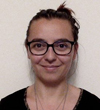

Accretion disks are the systems that most closely approach compact objects and are ideal systems to explore the non-linear and strong gravity regime. The guiding theme of this parallel session is expected, but are not limited to: theoretical and numerical modelling of accretion process in the strong gravitational field and related phenomena, relativistic turbulence and viscosity, accretion disks and jets, the evolution of accretion disks, and modelling of accretion disks in various gravity theories.
-
-
Active Galactic Nuclei
-
The Black Hole in M87
AG1Chairpersons: Brian Punsly and Jorge Rueda

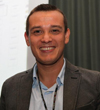
The Event Horizon Telescope (EHT) has heightened interest in the black hole in M87. This sessions aims to explore the origin of the annulus of emission at 230 GHz that was detected by EHT. Particular interest is given to non-MHD, low density modelling of the region adjacent to the event horizon. Subjects of primary interest are magnetic reconnection and possible accretion in this limit, as well as jet launching. The high energy emission from this region is an important possibility. The session will also invite discussion of the most recent high resolution images of the jet (at 3mm wavelength). -
Machine learning in astronomy: AGN, transient events, cosmology and others
AG2Chairpersons: Rahim Moradi and Yu Wang
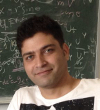

In recent years, machine learning (ML) and deep learning (DL) have become increasingly popular in astronomy and astrophysics. The advancements of observational detectors have led to the immense growth of astronomical data. The richness of the data has brought new opportunities for scientific discoveries, where astronomers develop intelligent tools and interfaces to deal with data sets and extract novel information. DL/ML aims to seek and recognize, by the optimization procedure, all available common characteristics and patterns in data, which helps in turn to accelerate the simulation, to promote the observation and to infer the physics. The ML/DL have been widely used for a variety of tasks, including classification of galaxies, evaluation of redshift, stellar atmospheric parameters estimation, large-scale structure and dark matter simulation, reionization sources identification, transient sources detection, gravitational lensing discrimination and cosmic microwave background inpainting. -
Multiwavelength and Multi-Messenger Observations of Active Galactic Nuclei
AG3Chairpersons: Paolo Giommi and Narek Sahakyan
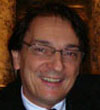

This parallel session will focus on the multiwavelength and multi-messenger observations of jetted active galactic nuclei (AGN), which are the most powerful persistent sources of radiation in the Universe. Blazars, the most extreme subclass of AGN having jets that move relativistically towards the observer, are characterized by highly variable non-thermal emission across the entire electromagnetic spectrum, from radio up to very high energy gamma-ray bands. The multiwavelength observations of blazars and theoretical interpretations of the results allows to study the physics of relativistic outflows under extreme conditions as well as to probe the physical condition of the plasma in the jet. The recent association of a very high-energy neutrino, IceCube-170922A, with a flaring blazar, TXS 0506+056, opened a new era for jet research providing unprecedented opportunity to combine information from different messengers to investigate long-standing problems in jet physics. The recent progress in multiwavelength and multi-messenger observations of blazars will be presented and discussed.
-
-
Alternative Theories
-
Extended Theories of Gravity and Quantum Cosmology
AT1Chairpersons: Yi-Fu Cai and Wentao Luo


The current understanding of gravitation is based on Albert Einstein's classical theory of General Relativity. While the study of gravitational waves in recent years have brought tremendous success to the classical General Relativity, this description is incomplete when describing several phenomena such as the singularity and event horizon of a black hole, the origin of the universe, fundamental understanding of dark energy, etc. Facing those conceptual issues in our universe, there is an increasing demand for the study on extended theories of gravity and quantum cosmology. In this parallel session, we invite researchers to pay attention to the aforementioned issues and welcome oral talks to report their progress on the latest study. -
Mathematical Problems of Relativistic Physics: Classical and Quantum
AT2Chairpersons: A. Shadi Tahvildar-Zadeh and Michael Kiessling
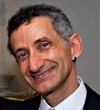

We will survey recent advances in mathematical analysis of relativistic and semi-relativistic phenomena, including:
1. Joint classical and quantum evolution of charged point particles and fields in special and general relativity;
2. Dirac's equation on electromagnetic background spacetimes;
3. Schroedinger-Newton equation and bosonic stars;
4. Interacting photon-electron systems in Dirac's multi-time formalism;
5. The ground state of Positronium as an ultralight spin-zero boson and its application to the dark matter puzzle;
6. Divison-algebraic underpinnings of the Standard Model of Elementary Particles. -
Wormholes, Energy Conditions and Time Machines
AT3Chairpersons: Francisco Lobo and Diego Rubiera-Garcia


The General Theory of Relativity has been an extremely successful theory, with a well established experimental footing, at least for weak gravitational fields. Its predictions range from the existence of black holes, gravitational radiation to the cosmological models, predicting a primordial beginning, namely the big-bang. All these solutions have been obtained by first considering a plausible distribution of matter, and through the Einstein field equation, the spacetime metric of the geometry is determined. However, one may solve the Einstein field equation in the reverse direction, namely, one first considers an interesting and exotic spacetime metric, then finds the matter source responsible for the respective geometry. In this manner, it was found that some of these solutions possess a peculiar property, namely 'exotic matter,' involving a stress-energy tensor that violates the null energy condition. These geometries also allow closed timelike curves, with the respective causality violations. These solutions are primarily useful as 'gedanken-experiments' and as a theoretician's probe of the foundations of general relativity, and include traversable wormholes and superluminal 'warp drive' spacetimes. In this parallel session, in addition to extensively exploring interesting features, in particular, the physical properties and characteristics of these 'exotic spacetimes,' we also explore other non-trivial general relativistic geometries that generate closed timelike curves. -
Theories of gravity: alternatives to the cosmological and particle standard models
AT4Chairpersons: Stefano Bellucci and Orlando Luongo
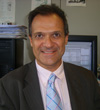
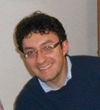
In the standard model of cosmology, the ΛCDM model based on Einstein’s General Relativity, dark energy is introduced completely ad hoc in order to explain the present acceleration of the universe. The model requires also the introduction of dark matter dominating (by far) ordinary baryonic matter but yet undetected in the laboratory, and it suffers from astrophysical problems. Modifying gravity is a possible alternative, and many such proposals have been presented in recent years. Likewise, the standard model of particle physics is unable to incorporate all the current particle phenomenology and proposed dark matter candidates.
Cosmology and particle physics come together in the early universe and, surprisingly, also in theories and models of the present, accelerating universe. This session is formulated in a wide framework to include several topics related to these problems, and spanning alternative theories of gravity and cosmology, alternatives to the ΛCDM model, quantum field theory applied to gravity, extensions of the standard model of particle physics, and dark energy and dark matter from a particle physics point of view. This session represents the interplay between, and the efforts to match, particle physics and cosmology, giving particular emphasis to the role played by particle quantum field theory in the early and the late universe. -
Conformal Dilaton Gravity and Related Issues
AT5Chairperson: Reinoud Jan Slagter

In the vicinity of the horizon of a black hole, curvature will be huge, so quantum effects will become important. Many attempts were made to construct a renormalizable and unitary quantum gravity model. For example, the effective field theory, where one ignores what is going on at high energy, or modified gravity models, where one loses unitarity. Further, just as in the Standard Model, one needs gauge-fixing terms as well as ghost fields. There is, however, a promising route to tackle these problems arising in quantum gravity. This model, conformal dilaton gravity, was initiated by ‘t Hooft. It is conjectured that conformal invariance is an exact symmetry and spontaneously broken, comparable with the Higgs mechanism. One writes the spacetime as g=omega^2.g’, where omega is the dilaton field, to be handled on an equal footing as the Higgs field and g’the “un-physical” spacetime. In constructing an effective action, one then first integrate over omega and afterwards over matter fields and g’. To overcome unitarity problems, the ingoing observer and the outside observers experience different omega, i. e., scales at which quantum effects becomes important. In fact, the dilaton is locally unobservable. It is fixed when one chooses the global spacetime and coordinate system. The complementarity of the Hawking radiation on the black hole spacetime, can be reformulated in connection with the information paradox .Other question that will come up for discussion: How will particles transmit the information they carry when crossing the horizon? Are they pure states or mixed states? What are the microstates of a black hole? Is there no inside by an antipodal map?
In this parallel session, all the issues mentioned above can be presented. -
Horava-Lifshitz Gravity
AT6Chairperson: Anzhong Wang

This section will focus on classical and quantum aspects of Horava-Lifshitz gravity and some related gravitational theories, such as Einstein-aether theory and khronometric gravity, as well as their applications to cosmology and astrophysics. -
Ghost-free models of modified gravity: massive gravity, Horndeski and DHOST theories, other related models; their properties and solutions.
AT7Chairpersons: Dmitry Gal’tsov and Michael Volkov
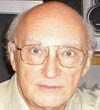
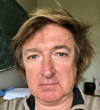
This section will focus on theoretical aspects of various models of modified gravity which are free from unphysical ghostly degrees of freedom with a negative norm. The well known examples are the theories of ghost-free massive gravity and bigravity, which are free from the Boulware-Deser ghost. Related to them are the Galileon models and, more generally, Horndeski and DHOST theories free from the Ostrogradsky ghost. Other examples are provided by the theory of non-local gravity, etc. All of these theories are interesting from the purely theoretical viewpoint and may provide a description of the Dark Energy and/or Dark Matter. Their various aspects may be discussed, as for example their Hamiltonian formulation and constraints; the causal structure and Cauchy problem; disformal dualities and solutions — cosmologies, black holes, ultracompact objects; observational constraints; quantum aspects; etc.
-
-
Black Holes: Theory and Observations/Experiments
-
Theoretical and observational studies of astrophysical black holes
BH1Chairperson: Alexander Zakharov

The session is devoted to theoretical and observational studies of astrophysical black holes. The session will include discussions of theoretical models for black hole solutions existing in GR and in alternative theories of gravity. Strong gravity effects and opportunities to test theoretical predictions with current and future observational facilities such as Keck, VLT (GRAVITY), The Event Horizon Telescope, JWST, E-ELT and TMT will be discussed. The main goal of the session is to establish an effective interaction between observers and theorists working in black hole astrophysics to test GR in a strong gravitational field limit and constrain alternative theories of gravity with current and future observations of astrophysical black holes. -
Black hole thermodynamics
BH2Chairperson: Hernando Quevedo

This parallel session will be devoted to physical and mathematical aspects of black hole thermodynamics. Topics of interest include, but are not limited to, different definitions of entropy, fundamental equations, thermodynamic laws and variables, phase transitions, extended phase space, stability properties, and critical coefficients of black holes in any dimension. The session will cover also the development and application of different analytical and geometric methods in the study of black hole thermodynamics. -
Black Holes in alternative theories of gravity
BH3Chairperson: Jutta Kunz and Kamal Hajian
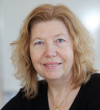
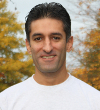
Black holes are excellent probes to study strong gravitational fields and thus to test Einstein's theory of general relativity and its contenders by comparing their predictions with observations. Alternative theories of gravity may lead to distinctive features for black holes, which include their multipoles, quasi-normal modes or shadows. -
Exploring the Black Hole Mass Gap
BH4Chairperson: Grant Mathews

The pair instability supernova in massive is believed to preclude the formation of black holes in the range of 50-120 solar masses. Nevertheless, recent detections suggest the existence of black holes with masses well inside the "mass gap". A flurry of ideas have emerged to explain the existence of black holes in the mass gap. This session will include talks summarizing various approaches to this dilemma.
-
Radio Astronomy from Space
BH5Chaipersons: Yuri Kovalev and Michael Johnson


Over the past century, radio astronomy has played a central role in experimental studies of General Relativity. Key milestones include measurement of the Shapiro time delay, discovery of cosmic background radiation, detection of gravitational waves using binary pulsars, discovery of superluminal motion in quasars, and the first image of a black hole using the EHT. Radio astronomy in space offers key advantages: WMAP and Planck revolutionized modern observational cosmology, while VSOP and RadioAstron achieved the sharpest resolution in the history of astronomy.
This parallel session will be devoted to recent results and plans for future space missions that target breakthroughs in experimental relativity using radio observations. The plans include high-resolution studies of the supermassive black holes Sgr A and M87 using a space-enhanced EHT, and cosmological studies using Lunar ultra-long wavelength radio telescopes.
-
-
Binaries
-
Explosive events associated with compact-object binary mergers
BN1Chairpersons: Chris Belczynski and Jorge Rueda
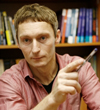

Double compact object mergers involve the densest objects in Universe; neutron stars (NS) and black holes (BH). Their electromagnetic (EM) radiation is routinely observed in short gamma-ray bursts, in the X-rays, as well as in the optical/IR via their associated kilonovas. Recently, BH-BH/BH-NS/NS-NS mergers are also routinely detected in gravitational-waves by LIGO/Virgo.
This session will be dedicated to any phenomena that may produce observable, either EM or non-EM, signals to merging (in any configurations) neutron stars and black holes. Along standard mechanisms (like ones operating in short gamma-ray bursts or kilonovas), we encourage discussion of other challenging and/or exotic proposals for detection of these sources by other not-yet-considered means, including possible future observational missions able to detect them.
Additional related questions are encouraged to be discussed in this session. Do BH-BH mergers produce any EM counterparts? Is this population of BH-BH merging binaries compatible with our previously gained astrophysical knowledge? Are BH-NS mergers expected to be accompanied by kilonovas? Have we observed any BH-NS merger in short gamma-ray bursts? Do we have any chance to detect neutrinos from NS-NS/BH-NS mergers? What are formation sites of compact object merging binaries?
-
Post-Newtonian and post-Minkowskian corrections for binary gravitating systems
BN2Chairperson: Johannes Bluemlein
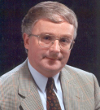
Recent developments on analytic results in the field of the post-Newtonian and post-Minkowskian corrections for binary gravitating systems without spin are reviewed. They are of importance in the further refined understanding of gravitational wave signals in the inspiraling phase. -
Multichannel studies of nonstationary relativistic stars
BN3Chairperson: Vladimir Lipunov
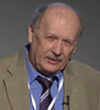
This session will focus on multimessenger observations and predictions of catastrophic events near relativistic stars: neutron stars, stellar and supermassive black holes.
We will talk about new multichannel operational observations and models in which new sciences are born - gravitational-wave astronomy (mergers of neutron stars and black holes), extragalactic neutrino astronomy (blazars and high-energy neutrinos), transient radio astronomy (Magnetars, Fast Radio Bursts, Soft Gamma Repeaters) and so on.
-
-
Boson stars
-
Scalar fields in cosmology
BS1Chairpersons: Carlos Herdeiro and Alfredo Macias
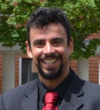
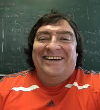
In the last years, the scalar field is becoming an interesting field of study in Cosmology and Astrophysics. It appears in the formulation of many phenomena in gravitational theories. Scalar fields occur throughout physics, as spin--zero quantum fields. A scalar field is always present in the context of Dirac's large number hypothesis and also in all unified field theories; it appears as a possible type of matter, i.e., as dilatons and as inflatons in the early periods of the Universe, as a candidate to describe the dark matter nature, and as a possible Bose-Einstein condensates. The purpose of this session is to discuss different bosonic systems, scalar fields, appearing in Cosmology and Astrophysics.
-
-
Cosmic Microwave Background
-
Cosmic Backgrounds from radio to far-IR
CM1Chairperson: Carlo Burigana
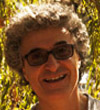
This parallel session will focus on the interpretation and perspectives for cosmology and astrophysics coming from cosmic backgrounds from radio to far-IR, both in temperature and in polarization.
The latest results from the Planck mission have been recently presented, while new sub-orbital experiments are investigating CMB polarization anisotropies and searching for primordial gravitational waves, and future CMB missions of different scales are foreseen or under study. The sub-mm / far-IR domain, crucial for high-frequency foreground mitigation, allows to study a number of astrophysical cosmology topics,
including the early stages of star and galaxy formation. In parallel, on-going and future radio projects promise to shed light on the dawn age and on the reionization epoch and to provide 3D images of the Universe's evolution.
The authors of both invited and contributed talks are encouraged to underline the connection between astrophysical and cosmological results. -
New Horizons in Cosmology with CMB Spectral Distortions
CM2Chaipersons: Jens Chluba and Andrea Ravenni
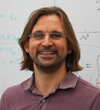
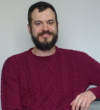
The study of cosmic microwave background (CMB) has revolutionized Cosmology as a whole, granting us a fine and quantitative understanding of how our Universe works. In the upcoming years, precision spectroscopy, possible with existing technology, can give us access to a new dimension in CMB studies. Measurements of the small departures of the CMB energy spectrum from a perfect black-body — called CMB spectral distortions (SD) — will further our understanding of recombination, reionization and structure formation as well as dark matter and particle physics.
This session is meant to trace a path from the experimental prospect to new theoretical investigations that can make the most of precise SD measurements, bringing together experts in theory and observation. From the experimental point of view we aim at providing an overview of the observational projects that are currently being discussed — ranging from ground to lunar and to space ones — alongside a discussion about the challenges that will have to be faced and how to best address them. From the theoretical point of view the program will include review talks on the state-of-the art of SD science, with special attention to new directions that could provide the starting point for new studies. -
Status of the H_0 and sigma_8 tensions: theoretical models and model-independent constraints
CM3Chairpersons: Joan Solà Peracaula and Adrià Gómez-Valent
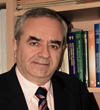
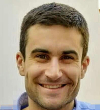
This session will be devoted to study the ability of the LCDM model (the "concordance model" of cosmology) to describe the modern cosmological observations and compare with model-independent analyses as well as with a variety of alternative theoretical frameworks which have been proposed to describe the same set of observations. Among the hot subjects that should be discussed in this session we have e.g.
i) The discordant measurements between the Hubble parameter determination from CMB data (under the assumption of the LCDM) and the (cosmology-independent) distance ladder determinations. Also the time-delay measurements from strongly lensed quasars and their current status;
ii) The long standing mismatch between the background and structure formation data, in particular the sigma_8 and S_8 tensions, both being quantities whose values in the LCDM are predicted to be larger than what is needed to improve the adjustment of the structure formation data obtained from galaxy clustering and weak lensing surveys;
iii) Possible solutions to the aforesaid tensions coming from theoretical models of different kinds; and
iv) The need to analyze data in a model independent way.
Discussions are also necessary concerning possible unaccounted systematic effects in the data. -
Effects of Primordial Perturbations Enhancement: from Black Holes Formation to CMB Anomalies
CM4Chairpersons: Antonio Enea Romano and Krzysztof Turzynski

There are several important phenomena associated to the enhancement of primordial perturbation, such as the production of primordial black holes (PBH), or local modifications of the cosmic microwave background (CMB) spectrum. General model-independent considerations suggest two main mechanisms which can lead to the enhancement: a temporary violation of the slow-roll conditions during inflation, or the presence of large primordial non adiabatic or anisotropic perturbations.
In this section, we will focus on the different theoretical scenarios proposed to produce the perturbations enhancement, on its observational effects on PBHs and CMB, and on the advantages of adopting a model independent approach. In the context of PBHs, special attention will be devoted to the numerical simulations of the PBHs formation, and to the effects of the shape of the peaks of perturbations. We also invite all other theoretical ideas about the enhancement of primordial perturbations and PBH production originating from inflationary or post-inflationary dynamics.
-
-
Cosmic Strings
-
Cosmic Strings
CS1Chairpersons: Reinoud Jan Slagter and Batool Imtiaz


Cosmic strings(CS’s) are topological defects formed at the GUT symmetry breaking scale in the Einstein-U(1) scalar- gauge field model. This model shows a surprising resemblance with superconductivity and the relativistic Nielsen-Olesenquantized magneticflux vortex solution. In the standard model of particle physics this scalar- gauge field is responsible for the spontaneously broken symmetry (Higgs mechanism). So one could say that this quantum field with the Mexican hat potential has lived up to its reputation. In cosmological context,the confined regions of the false vacuum of the scalar field form a locus of trapped energy, i.e., a CS. The mass and dimension of a CS is largely determined by the energy scale at which the phase transition takes place. It is believed that in the FLRW model a scale-invariant cosmic string-network is formed. Observational bounds, however, predict a negligible contribution of CS’s to large-scale inhomogeneities such as the angular distribution in the CMB radiation. A renewed interest occurred when it was realized that CS’s could be produced within the framework of superstring theory inspired cosmological models, i.e., brane-world models.Supersymmetric GUT’s can even demand the existence of CS. These super-massive CS’s could be produced when the universe underwent phase transitions at energies much higher than the GUT scale, so their gravitational impact increases. Although evidence of CS are not yet found, new observational windows are opened by these super-massive CS’s.
In this parallel session one can present cosmic string-related subjects, such as observational results on CS, gravitational waves and CS, vortex solutions and GRT, cosmic strings and higher dimensional models. -
From cosmic strings to superstrings
CS2Chairpersons: Carlos Martins and Ivan Rybak
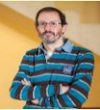
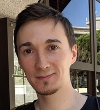
Cosmic strings arise naturally in many proposed theories of new physics beyond the standard model, including superstring inspired inflation models. In the latter case, fundamental superstrings may have stretched to macroscopic scales, known as cosmic superstrings. If observed, these objects provide a unique window into the early universe. Recent observational progress highlights how some of these scenarios could be constrained, but they also show a bottleneck in the lack of accurate high-resolution network simulations that can be used as templates for robust statistical analysis. Additionally, most numerical simulations and analytic modeling so far are for the simplest cosmic strings, while realistic ones might have nontrivial internal structure, implying that current constraints are unreliable for these scenarios. This session will discuss recent progress in numerical simulations and analytic modeling, with a view to obtaining a more reliable assessment of the cosmological roles of these networks.
-
-
Dark Energy and Large Scale Structure
-
Dark Energy and the accelerating universe
DE1Chairpersons: Alexei Starobinky and David Polarski
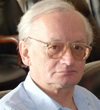
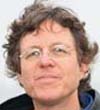
This parallel session will be devoted to the study of the nature and the physical properties of Dark Energy producing the observed accelerated expansion of the present Universe. It will cover the phenomenological reconstruction of dark energy properties from observations, as well as consideration of a wide variety of theoretical models and approaches aimed to explain existing observational data, including modified gravity models, interacting dark energy and other extensions. -
Cosmography with Gravitational Lensing
DE2Chairpersons: Claudio Grillo and Mimoza Hafizi


Gravitational lensing has tremendously contributed to our understanding of the Universe in the past thirty years. Progress in this field has been extremely rapid, thanks to major advances in both observation and theory. Several recent studies have shown that gravitational lensing can provide accurate and precise estimates, independent from and complementary to those of other probes, of the Hubble constant and of the geometry of the Universe. The wealth of data from current and future surveys will transform gravitational lensing into a fundamental alternative tool for measuring some of the most relevant cosmological quantities. Analyses will no longer be statistically limited and they might point to exciting new physics. A concerted effort between observers and theorists will be needed to control systematics and reap the rewards from the large gravitational lensing datasets.
-
-
Dark Matter
-
Interacting Dark Matter
DM1Chairperson: Nikolaos Mavromatos

The session is devoted to the physics of all possible aspects of interacting dark matter, including self interactions of dark matter and their cosmological consequences, or interactions of dark matter with ordinary matter and their consequences. Various types of dark matter in various models, including supersymmetry, are considered. Dark matter searches also constitute part of the session's subject. -
Dark Matter Detection
DM2Chaipersons: Hong-Jian He, Qian Yue and Qiang Yuan
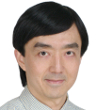


Dark matter detection has been an exciting frontier over the past twenty years. Particle physicists and astrophysicists are probing wide mass ranges to hunt for different dark matter (DM) candidates. In this parallel session, the speakers are welcome to present the experimental and theoretical works on both direct and indirect DM detection as well as the collider detection of DM, including such as WIMP candidates and beyond. -
Dark Matter Searches with Liquid Xenon and Argon Detectors and Self Gravitating Systems and Dark Matter
DM4+DM3Chairperson: Marco Merafina
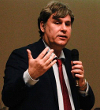
This session is devoted to the presentation and discussion of new theoretical results regarding the analysis of the properties of the galactic halos from the gravitational point of view in connection with the dark matter particle mass problem. Exotic hypotheses including axions or particles with strangeness are also taken into account. -
Dark Matter Searches with Liquid Xenon and Argon Detectors and Self Gravitating Systems and Dark Matter
DM4+DM3Chairpersons: Soroush Shakeri and She-Sheng Xue

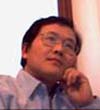
The evidence for the existence of dark matter (DM) which makes up 85% of the matter in the universe, is implied from various astrophysical and cosmological observations, but the fundamental nature of DM remains one of the foremost open questions in physics. Research into the direct detection of DM particles has revealed a vast numbers of theoretical and experimental efforts so far. Among different detection methods, DM searches based on nuclear and electronic recoil using Liquid Xenon (LXe) and Liquid Argon (LAr) have great discovery potential and continue to play a major role in the field.
In this session, we will discuss possible signatures of different sub-Gev dark matter candidates within current and future LXe/LAr detectors.We welcome presentations of recent results, ongoing efforts and theoretical attempts in the next generation of XENON detectors such as XENONnT, LZ, PandaX-II and Darwin, and also upcoming Argon detectors such as ArDM, DarkSide-50, DEAP-3600, and MiniCLEAN. We are open to accept talks about the XENON1T new observation on low-energy excess in electronic recoils and possible requirement for further confirmation with more precise future instruments. Both contributions on experimental and theoretical efforts are also welcome. -
Dark Matter: Beyond LCDM
DM5Chairpersons: Carlos Argüelles and Andreas Krut


This parallel session is devoted to the implications on dark matter in our Galaxy: both in the galactic core and in the halo. It includes the topics of linear and non-linear structure formation, phenomenology on galaxy rotation curves, gravitational lensing, and stellar strems, as the topics of main interest. -
Dark Matter and Rare Processes
DM6Chairpersons: Rita Bernabei and Zurab Berezhiani


This session will focus on results and ideas on the important topics of Dark Matter detection and of searches for rare processes. Both contributions on experimental and theoretical efforts are welcome. -
The Nature of Galactic Halos
DM7Chaipersons: Francesco De Paolis and Asghar Qadir

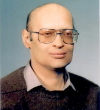
By the rotation curves of spiral galaxies, the X-ray emission of ellipticals and the dynamics of the galaxy clusters, we know that there is much more matter in the outer reaches of these systems than is accounted for by visible matter, including gas and dust. Even this is confirmed by the primordial nucleosynthesis and CMB observations , we also know that there is much more baryonic matter than that accounted for in the above forms. This is the so-called "missing baryon problem". It is important, then, to accurately determine the content and nature of the galactic halos and try to "see" the halos by alternate means. That will be the purpose of this session.
-
-
Education
-
Teaching Einsteinian Physics to School Students
ED1Chairpersons: David Blair and Matteo Luca Ruggiero


This workshop will address all aspects of education and public outreach associated with relativistic astrophysics and associated Einsteinian physics, including the modernisation of school curricula to incorporate modern concepts of spacetime, relativity, quantum physics, the standard model, cosmology, black holes and gravitational waves.
-
-
Exact Solutions
-
Exact Solutions in Four and Higher Dimensions
ES1Chairpersons: Georgy Alekseev and Fabio Briscese
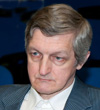
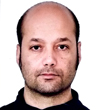
This Parallel Session will be devoted to a variety of mathematical methods, associated mathematical structures and other mathematical aspects of the analysis of Einstein's field equations, constructing exact solutions and development of various solution generating techniques, interrelations of different approaches, classifications of solutions, studies of the structures, physical and geometrical properties of particular solutions and classes of solutions in General Relativity as well as in various gravity, string gravity and supergravity models in four and higher dimensions. -
Exact Solutions (including higher dimensions)
ES2Chairperson: Susan Scott

In this session we will consider physical aspects of exact solutions of Einstein's equation and higher dimensional theories. This will include all issues related to the global structure of these solutions, the physical interpretation of the solutions and the analysis of their physical properties including symmetries and singularity structure.
-
-
Early Universe
-
Quantum Fields
EU1Chairperson: Andrei Lebed

This session is dedicated to the all aspects of the theory of quantum fields. Special interest we will pay to the quantum fields in curved space-time and to any results having applications in General Relativity. -
Topological methods, global existence problems, and spacetime singularities
EU2Chairperson: Spiros Cotsakis
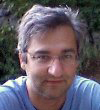
This is session is about global causal structure problems, topological methods for spacetime structure and evolution, global existence and stability problems, nature and classification of singularities, general theory of black holes, character of singularities in geometric extensions of GR and string theories. -
The Early Universe
EU3Chairperson: Stefano Ansoldi
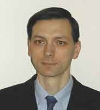
This parallel session focus is on theoretical (both, analytic and computational) results that advance our understanding of the physics of the early universe. Contributions are welcome on a wide range of topics including, but not limited to, inflation (related open problems, models and predictions), alternatives to inflation and their viability (in, both, general relativity and/or modified gravity theories), quantum fields (theory and phenomenology) on cosmological backgrounds, and, in general, technical and conceptual proposals that address open fundamental issues in the physics of the early universe. This session aims to be complementary to AT1, BS1, and the CM1-4 sessions on the cosmic microwave background and the lambda cold dark matter models.
-
-
Fundamental Interactions and Stellar Evolution
-
Why and how the Sun and the Stars shine: the Borexino experiment
FS1Chairpersons: Giampaolo Bellini, Dmitry Naumov, Gioacchino Ranucci, Gemma Testera




The Borexino experiment, thanks to the unprecedented radiopurity of the detector, never reached even now by any other experiment, succeeded to measure all solar neutrinos fluxes, which are emitted by five nuclear reactions of the pp cycle, which produces 99% the whole solar energy, and from the CNO cycle, responsible for 1% of it. The existence of these cycles had already been hypothesized since 1937 by Hans Bethe and Carl Friedrich von Weizsacker: the pp cycle, which leads to the production of 4He, is dominant in stars having a size like or smaller than the Sun, while the CNO cycle, catalyzed by 12C, 14N and 16O nuclides, dominates in massive stars, with a mass greater at least 30% more that the solar one. The solar neutrinos flux has been globally measured by radiochemical experiments, without distinguishing among the contributions of the various nuclear reactions, while the experiments with Cherenkov light studied only a tail of the 8B reaction corresponding to 0.1% of the total flux; on the other hand, the CNO cycle has never received direct proof of its existence.
Due to its very high radiopurity, the Borexino experiment was able to measure separately the fluxes of the pp five reactions that emit neutrinos, attesting their identification, and reached the first experimental evidence of the CNO cycle existence. In this Session, these results will be discussed together with the upgrading of neutrino oscillation physics as a consequence of the measurements described above; in addition what discovered so far on geo-neutrinos has been presented. -
Rotation in Stellar Evolution
FS2Chairperson: Georges Meynet

Rotation has become in the last decades a central topic in stellar physics. This is due to many reasons, the main ones being the fact that rotation can trigger many instabilities in stellar interiors driving transport of chemical species and angular momentum, deeply impacting the evolution of stars, their final fate and the nature and properties of their remnants (white dwarfs, neutron stars or black holes). At present, hello- and asteroseismology provide direct views on how our Sun, but also low-mass stars as subgiants and red giantes rotate internally offering thus very strong constraints on these transport processes. This session will discuss the most recent constraints coming from asteroseismology, the confrontation of diverse models aiming to account for them, and the consequences of these theories for the spin of the stellar remnants.
-
-
Fast Transients
-
What can we learn from a growing sample of Fast Radio Bursts?
GB1Chairpersons: Duncan Lorimer, Victoria Kaspi and Bing Zhang
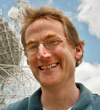

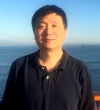
This parallel sessions will cover Fast Radio Bursts (FRBs), a recently identified cosmic phenomenon consisting of few-millisecond radio bursts arriving from far outside the Milky Way, even from cosmological distances. The origins of FRBs are currently unknown. These two parallel sessions will cover the current observational status of FRBs, including results of recent and ongoing FRB surveys, current theoretical models of FRBs, as well as observational multi-wavelength follow-up of FRBs currently underway with the goal of constraining FRB models and exploiting FRBs as novel cosmic probes. -
Non Standard Cosmological Probes
GB2Chaipersons: Lorenzo Amati, Massimo della Valle and Michele Moresco

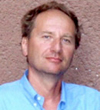
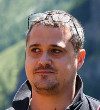
Cosmological studies of the last twenty years have mainly focused on the use of CMB, SNe, BAO, WL. While the combination of these methods has proven extremely powerful in constraining the values of cosmological parameters, some recent Ho measurements, obtained with “local” indicators such as Cepheids and type Ia SNe, show an existing tension with the prediction from Planck CMB observations under ΛCDM. This fact requires new efforts to study different approaches and methods for studying the expansion of the Universe and the evolution of dark energy. This session presents an overview of the alternative cosmological probes that have been developed in recent years, such as: GRB, QSO, GW, delayed cosmography, cosmic chronometers. We will discuss how these probes can be exploited to extract independent cosmological constraints and explore the synergies between these and standard cosmological methods. One of the goals of the session is to foster discussion of how these probes can provide, in perspective, a fundamental contribution to our understanding of the Universe. -
Photospheric Emission in GRBs
GB3Chairpersons: Gregory Vereshchagin and Damien Begue
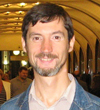
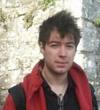
Time resolved spectra of many gamma-ray bursts present signatures of evolving thermal component in keV band, either in the prompt emission or in the early afterglow. In some bursts this component is dominant with respect to the non-thermal one, in others it is less pronounced. Such thermal component is associated with the photosphere of highly relativistic outflows launched by the central engine. In our session we will discuss basic radiation mechanisms producing observed spectra and light curves of gamma-ray bursts and their respective roles. Special attention will be given to theoretical and observational results aiming at discrimination between these mechanisms, in particular synchrotron and photospheric emission. -
High and Very High Energy emission from Gamma Ray Bursts
GB4Chairpersons: Francesco Longo and Fabian Schüssler

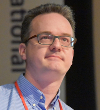
GeV and TeV observations of gamma-ray bursts (GRBs) gamma-ray and ground based telescopes over the past decade have opened a new era in the study of GRBs. This session will discuss recent observations of GRBs at GeV and TeV energies and their relation to the prompt <~ MeV emission and the long-lived afterglow emission. The theoretical implications of these observations will be also discussed, which range from the progenitor nature to the prompt GRB emission mechanism and outflow Lorentz factor and composition, through the GRB jet launching and acceleration mechanism, to particle acceleration in collisionless shocks or magnetic reconnection, constraints on Lorentz invariance violation and the Extragalactic Background light. The session will also discuss the prospects of GRB detection by the future MeV to TeV telescopes. -
Electromagnetic counterparts of compact binary mergers
GB5Chairpersons: Jonathan Granot and Paz Beniamini
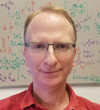

Electromagnetic (EM) counterparts of merging compact binaries containing neutron stars (two neutron stars or a neutron star and a black hole) can arise from different components of the merger ejecta. Examples include the prompt gamma-ray signal associated with emission from the relativistic jet or cocoon, the multi-wavelength afterglow associated with the interaction of the jet with the surrounding medium, the kilonova resulting from the r-process heated ejecta and the kilonova afterglow arising from the interaction of the latter ejecta with its environment. The first detection of a gravitational wave signal from a binary neutron star merger, GW 170817, has vividly confirmed three of these predicted EM counterparts, as its violent burst of gravitational waves was accompanied by the short GRB 170817A, a spectacular kilonova and a long-lived afterglow. This triple association has already significantly boosted our understanding of each of those components individually and helps us construct a more comprehensive picture of compact binary mergers in an astrophysical context. Furthermore, it has even enabled us to put significant constraints on topics of broad interest in physics from the neutron star equation of state to the expansion rate of the Universe. It is an exceptional demonstration of the power of multi-messenger astrophysics. Future compact binary mergers detected in gravitational waves and / or EM counterparts and further observations of the (still detectable) EM counterparts of GW 170817, therefore hold great promise to boost our understanding further. This session aims to explore the lessons learned from the observed counterparts and to prepare the community for future detections. -
Unusual and New Types of Gamma-ray Bursts
GB6Chairperson: Binbin Zhang

This session focuses on GRBs with unusual temporal, spectral, and multi-messenger properties, as well as new types of GRBs with new physical origins (such as Giant Flare GRBs). -
Gamma-Ray Burst Correlations: Observational Challenges and Theoretical Interpretation
GB7Chairperson: Maria Giovanna Dainotti and Liang Li


Gamma-Ray Bursts are among the most distant phenomena in the Universe and because of that they can be used as standardizable candles through important correlations. The session will discuss the role of correlations both in prompt and afterglow, from high-energy gamma-rays to optical and radio observations. It will also deal with all the challenges in observations and the possible theoretical interpretation. The session will discuss also the application of them as cosmological tools and how satellites like Swift, Beppo-Sax and future mission can advantage of these correlations at high-z. -
GRB 170817A and Binary Models
GB8Chairpersons: Marica Branchesi and Giulia Stratta


On August 17, 2017, the Advanced LIGO and Advanced Virgo network reported the detection of a gravitational wave signal identified as GW170817. Nearly simultaneously and in a completely independent way, the gamma-ray Observatories Fermi and INTEGRAL detected a short GRB spatially consistent with GW170817. A massive follow-up campaign, still ongoing, has allowed gathering of a huge amount of multi-wavelength data from this source, from gamma-rays to radio. This session aims at providing the status of the art on the observations of GW170817, GRB170817 and the associated optical emission, as well as on the interpretation of the observed properties of these emission components in the context of merging binary models. -
Binary-Driven Hypernovae of type 1, 2 and 3
GB9Chairpersons: Carlo Luciano Bianco, Christian Cherubini and Simonetta Filippi
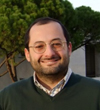
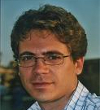
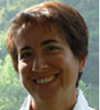
Since a few years, thanks to an extensive multiwavelength GRB observational campaign, there is mounting evidence for a GRB classification scheme with nine different sub-classes. Within such a scheme, at variance with the traditional approach, the previously called "long GRBs" do not originate in the collapse of single massive stars but in binary systems formed by an evolved carbon-oxygen core, exploding as a type Ic supernova (SN), and a companion neutron star (NS) undergoing hypercritical accretion. These binary systems have been named "Binary Driven Hypernovae" (BdHNe). At least three different types of BdHNe have been identified, depending on their binary separation. Type 1 BdHNe are the closest ones: the hypercritical accretion makes the companion NS reach its critical mass and collapse to a black hole (BH) the outcome is a new binary system composed by a new NS (vNS) produced by the SN explosion and a companion BH, the emitted GRB has an isotropic energy \sim 10^{52}-10^{54} erg and it presents an associated high energy emission in the GeV energy range. Type 2 BdHNe are more detached: the hypercritical accretion is not sufficient to trigger the collapse of the companion NS to a BH, the outcome is a new binary system composed by a vNS and a companion more massive NS, the emitted GRB has an isotropic energy \sim 10^{50}-10^{52} erg and no associated GeV emission is expected. In Type 3 BdHNe are similar to Type 2 but even more detached, and the emitted GRB is correspondingly even weaker (isotropic energy \sim 10^{48}-10^{50} erg with no associated GeV emission). The session aims at providing the current status of the art on the developments of the BdHN scenario, both from a theoretical and observational point of view.
-
-
Gravitational Waves
-
Sources of Gravitational Waves
GW1Chairperson: Andrew Melatos
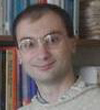
The main aims of the session are: (1) to review recent progress in source modelling; (2) to discuss how GW detections can help solve problems in astrophysics and cosmology, e.g. binary star evolution; and (3) to explore ways in which GW signals can be combined with source models to answer fundamental questions in physics that cannot be probed easily in terrestrial laboratories, e.g. neutrino transport in ultradense environments, nuclear equation of state, origin of superstrong magnetic fields, et cetera -
Mid-frequency Gravitational Waves (0.1-10 Hz): Sources and Detection Methods
GW2Chairperson: Wei-Tou Ni
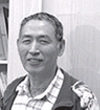
The mid-frequency GW band (0.1-10 Hz) between LIGO-Virgo-KAGRA detection band and LISA-TAIJI detection band is rich in GW sources. In addition to the intermediate BH (Black Hole) Binary coalescence (recently an event is detected by LIGO-Virgo collaboration), the inspiral phase of stellar-mass coalescence and GWs from compact binaries falling into intermediate BHs, it also enable us to study the compact object population, to test general relativity and beyond-the Standard-Model theories, to explore the stochastic GW background and so on. In addition to DECIGO and BBO, the detection proposals under study includes AEDGE, AIGSO, AION, AMIGO, ELGAR, INO, MAGIS, MIGA, SOGRO, TOBA, ZAIGA, etc. Great advances have accumulated since MG15. We solicit progress papers for this parallel session. -
Planning Gravitational Wave detections form LISA
GW3Chairperson: Philippe Jetzer

LISA is a large ESA mission with an important NASA contribution. It is scheduled to be launced in 2034. The scope of LISA is to detect and study low-frequency gravitational waves (GW) from about 0.1 mHz to 1 Hz, and thus to complement ground-based GW observatories. LISA will allow to detect supermassive black holes (typically of 10^6 - 10^7 solar masses) merging at cosmological distances. Mergers of a supermassive black hole with another compact object (EMRI) produce a very clean GW signal which LISA will be able to measure with high precision. Another class of objects are ultra-compact binaries, in particular of white dwarfs in our Galaxy, since they are important sources of GW in the mHz frequency range. Moreover, it will be possible to detect or put strong constraints on the primordial gravitational wave background, which is just, as the cosmic microwave background, a leftover from the Big Bang. The aim of this parallel session is to discuss various aspects of the physics and astrophysics related to the above mentioned objects observable with LISA as well as issues related to the LISA data analysis. -
Numerical Relativity and Gravitational Wave Observations
GW4Chairperson: Nigel Bishop

The session is open for talks on all aspects of computation related to the calculation of gravitational waves that are potentially observable. This includes the development and applications of codes, as well as the development of relevant mathematical theory or computational methods.
-
-
High Energy
-
Very High Energy Gamma Rays
HE1Chairpersons: Razmik Mirzoyan and Alessandro De Angelis
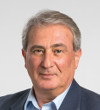

-
High Energy Astrophysical Neutrino Detection
HE2Chairperson: Antonio Capone

After the IceCube discovery of a flux of High Energy Neutrinos in excess of the atmospheric component, the search for galactic and extragalactic neutrino sources is one of the major goals of High Energy astroparticle Physics.
Neutrinos, being neutral and only weakly interacting, can travel intergalactic distances without being deflected by magnetic fields and/or being affected by interactions with matter: they are a perfect tool for astronomy.
Neutrinos are one of the messengers (as H.E. charged C.R., electromagnetic signals, G.W.) that can allow to identify these sources.
A multi-messenger identification of astrophysical sources will not only provide a solid evidence of the discovery, it will allow to better understand its nature and its internal dynamics.
Within this parallel session the experimental efforts going on at present for the HE Astrophysical neutrino detection as well as the models for the emission of Astrophysical neutrinos will be discussed. HE Astrophysical Neutrino detection will be discussed in the contest of a multi-messenger astrophysics. -
Future Missions for High-Energy Astrophysics
HE3Chairpersons: Filippo Frontera and Shaolin Xiong
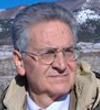
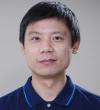
The session will be devoted to overview open issues in high energy astrophysics and the ongoing experimental activities to settle them. Thus, in addition to the open issues, the session will deal with an overview of the X-/gamma-ray instruments or mission concepts now under study, submitted or intended to be submitted to national or international space agencies, missions already approved or on the way for their evaluation by national or international space agencies. -
The SRG Mission: First Results from eROSITA and ART-XC
HE4Chairperson: Andrea Merloni

The next generation of wide-area, sensitive X-ray surveys designed to map the hot and energetic Universe has arrived, thanks to eROSITA (extended ROentgen Survey with an Imaging Telescope Array) and ART-XC (Astronomical Roentgen Telescope - X-ray Concentrator) the two instruments on the Russian-German Spektrum-Roentgen-Gamma (SRG) mission. eROSITA high sensitivity, large field of view, high spatial resolution and survey efficiency is bound to revolutionize X-ray astronomy and deliver large legacy samples for many classes of astronomical objects in the energy range 0.2-8 keV, while ART-Xc will offer a new insight into the Hard-X-ray sky at energies 4-30 keV. During this session we will present an overview of the instruments capabilities, the current status of the mission, a few selected early science results and the expectations for the survey program, which has completed last December the second of its eight planned charts of the whole sky. -
eXTP – enhanced X-ray Timing and Polarimetry Mission
HE5Chairpersons: Marco Feroci and Fangjun Lu

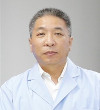
eXTP is a flagship science mission of the Chinese Academy of Sciences and China National Space Administration, with a large contribution by science institutions in Italy, Spain, Austria, Czech Republic, Denmark, France, Germany, the Netherlands, Poland, Switzerland, Turkey. The mission is designed to study the state of matter under extreme conditions of density, gravity and magnetism. Primary goals are the determination of the equation of state of matter at supra-nuclear density, the measurement of QED effects in highly magnetized star, the study of accretion in the strong-field regime of gravity, as well as multi-messenger astrophysics. Primary targets include isolated and binary neutron stars, strong magnetic field systems like magnetars, and stellar-mass and supermassive black holes. The mission carries a unique and unprecedented suite of state-of-the-art scientific instruments enabling for the first time ever the simultaneous spectral-timing-polarimetry studies of cosmic sources in the energy range from 0.5-30 keV (and beyond). Key elements of the payload are: the Spectroscopic Focusing Array (SFA)- a set of 9 X-ray optics for a total effective area of ~0.7 m2 and 0.5 m2 at 2 keV and 6 keV respectively, equipped withSilicon Drift Detectors offering 150 eV spectral resolution; the Large Area Detector (LAD) - a deployable set of 640Silicon Drift Detectors, for a total effective area of ~3.4 m2, and spectral resolution better than 250 eV; the Polarimetry Focusing Array (PFA) – a set of 4 X-ray telescope, for a total effective area of >500 cm2 at 2 keV, equipped with imaging gas pixel photoelectric polarimeters; the Wide Field Monitor (WFM) - a set of 3 coded mask wide field units, equipped with position-sensitive Silicon Drift Detectors, each covering a 90 degrees x 90 degrees field of view. The SFA and the PFA will be under Chinese responsibilities, whereas the LAD and WFM will be under European responsibility, with some reciprocal contributions. The planned launch date of the mission is end-2027. The parallel session on eXTP at this conference will report on the status of the mission, its science goals and perspectives. -
Observations of HE and UHE Cosmic Rays
HE6Chairpersons: Ivan De Mitri and Fabio Gargano


The study of High Energy (HE) and Ultra-High Energy (UHE) cosmic rays offers unique possibilities to probe their acceleration mechanisms and the effects of their propagation with the interstellar/intergalactic medium. The session will be devoted to a review of recent observations of electrons/positrons, protons/antiprotons, and nuclei made by space and ground-based experiments at energies above hundreds of GeV. New techniques or mission concepts will also be discussed.
-
-
History of Relativity
-
The "Fall and Rise" of Betelgeuse
HR1Chairperson: Costantino Sigismondi

In October 2019 the luminosity of the red supergiant Betelgeuse started its descent to a particularly deep minimum in February 2020, rather predictable in time, but not in magnitude, which actually made rare the event. This condition, especially for semiregular variable stars, but also and even more for Mira-type stars, is not unique.
The case of Betelgeuse raised many original works from various groups of researchers, either observational either theoretical.
In this meeting session, occurring one primary oscillating period of Betelgeuse after that minimum, are strongly encouraged the presentations of works on Betelgeuse, on its variability, on its deep 2020 minimum, on supergiant stars similar to Betelgeuse, on time series analysis in stellar astrophysics, on observational aspects of stellar variability, on the pre-supernova stages. -
History of Relativity, Gravitation and Cosmology
HR2Chairperson: Luis Crispino
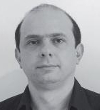
This session is devoted to the historical developments of Gravitation, Cosmology and Relativity. Since this is the first Marcel Grossmann meeting happening after the 100th anniversary of the 1919 total solar eclipse, contributions about the pioneering experimental attempts to verify gravitational light bending effect are expected. More generically, contributions devoted to historical analysis of ancient and modern works in Gravitation and Cosmology, as well as on the first developments of relativity theory, will be appreciated. Talks with biographical aspects of scientists with significant contributions to Relativity, Gravitation and Cosmology, as well as on General Relativity tests, or other generic historical aspects of these subjects, are also welcome. -
Time and Philosophy in Physics
HR3Chairperson: Shokoufe Faraji

It is astonishing that we can understand the Universe the way we do. However, concurrently celebrating the achievements of science, we should respect its limits and not claim more than it can actually achieve or attain, where by pushing its limits, difficult philosophical issues may arise. Since the visible universe may not give us enough information to characterize the laws of physics completely, thus we need a more comprehensive framework that not only incorporates science but can also go beyond the limits and takes care of ultimate questions as well; like does the world covered by science describe the whole reality? What about underlying assumptions and axioms in cosmology? What about all the philosophical issues related to "the interpretation of quantum mechanics," "measurement Problem," and the ontological character of quantum states? Why does the Universe have the exceptional structure that life can exist? Also, the questions on the domain of validity of the current laws of physics, and the nature of existence of infinities. However, maybe above all, the nature of time and the order present in nature is the greatest secret in the Universe.
Perhaps the world is much more complicated than can be explained only by science and this is time to reconsider questions like whether philosophy plays an essential role in the development of science, or is more damaging than helpful for physics, "because the big questions that used to be discussed by philosophers are now in the hands of physicists". The aim of this parallel session is to overview open issues related to the above-mentioned aspects and to bring researchers from different areas together in a complementary viewpoint.
-
-
Neutron Stars
-
Dense matter in compact stars
NS1Chairpersons: Alessandro Drago and Jorge Rueda


This session is devoted to reporting advances in the theoretical understanding of microphysics (equation of state, particle composition, etc) and macrophysical structure of high-dense compact stars such as neutron stars, hybrid stars, and quark stars. In recent years, multimessenger observations of these compact stars in binaries as well as isolated, e.g. in the X-rays (e.g. NICER, HXMT, XMM-Newton, Chandra, Swift), gamma-rays (e.g. Fermi), and radio facilities, together with synergic analyses of gravitational waves, neutrinos, and dark matter have given rise to new observational windows and constraints on compact stars' structure on which this session welcomes discussions, including perspectives from forthcoming experimental facilities. -
Compact stars as laboratories for testing strong gravity
NS2Chairpersons: Aurora Perez Martinez and César Augusto Zen Vasconcellos


There are reasons to believe the 21st century will be the best ever for astrophysics: the James Webb Space Telescope will extend nearly twenty times the present observational limit of visible light; neutrino massiveness opens a new window for exploration on dark energy and dark matter physics and is expected to provide insights into the fate of the Universe; the Higgs boson may allow for an understanding of the weakness of gravity; gravitational waves produced at the birth of the Universe and by compact stellar objects (supermassive black holes, black hole/neutron star mergers, gamma-ray bursts, white dwarf inspirals) have unveiled a new area of astronomy. Framed by this background, compact stars represent an unique astrophysical laboratories for probing the fabric of space-time and the building blocks of matter and their interactions at physical regimes not attainable in terrestrial laboratories. The strong gravitational fields of compact stars - black holes, pulsars, neutron, and exotic stars - provide this way an unique test ground for strong gravity and modified theories of gravity and can offer restrictions for extended theories of general relativity. The aim of this session is to bring together researchers from cosmology, particle physics, nuclear theory and astrophysics, working on these topics from different but complementary viewpoints. -
Pulsar Power in Physics and Astrophysics and Pulsars and Pulsar Systems at High Energies
NS3+NS5Chairperson: Andrea Possenti
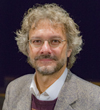
Thanks to the clock-like nature of their pulsed emission, it is well known that some radio pulsars can provide an accurate and very precise determination of their positional, kinematic, rotational and (when applicable) orbital parameters, as well as indications on the properties of their space-time environment. That in turn paved the way to the use of the pulsars as unique tools for a variety of experiments in fundamental physics and astrophysics.
The decades-long monitoring of the best systems, the new methodologies for the data analysis, the uninterrupted series of discoveries of new intriguing binary pulsar systems, coupled with the advent of a new generation of instruments, alike the Meerkat telescope in South Africa or FAST in China, are now allowing pulsar science to address new key astrophysical questions and to perform unprecedented tests of fundamental theories. This session will host the presentation of the most significant recent results of pulsar timing, as well as shedding light on the exciting immediate perspectives opened by the new radio telescopes and the transformational developments provided by the future Square Kilometer Array (SKA). -
Pulsar Power in Physics and Astrophysics and Pulsars and Pulsar Systems at High Energies
NS3+NS5Chairperson: Pak-Hin Tam

Pulsars and pulsar systems are efficient particle accelerators. Young pulsars and millisecond pulsars accelerate particles to relativistic speeds in their magnetosphere, emitting gamma-rays seen by the Fermi Gamma-ray Space Telescope. At larger length scales, pulsar wind particles are re-accelerated at the termination shock, generating pulsar wind nebulae in radio, X-rays, up to gamma-ray energies. Recently, a group of middle-aged pulsars, notably Geminga, are seen to be surrounded by an even larger structure -- TeV halo, discovered by the HAWC detector. Understanding how particles are transported from the pulsar to TeV halo scales (i.e., from 10 km to 10 parsec) is an important question in pulsar physics and can have implications to cosmic-ray physics. In this session, related topics will be discussed in the context of both observational and theoretical aspects.
-
-
Precision Tests
-
Gravitational Lensing and Shadows
PT1Chairpersons: Perlick Volker and Oleg Tsupko
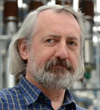

This session is devoted to gravitational lensing and shadows.Emphasis is expected to be on analytical and numerical studies. In particular, we will discuss the shadows of black holes and other compact objects, higher-order images produced by lensing and the influence of a plasma on lensing effects. Talks on other aspects of light propagation in gravitational fields are welcome as well. -
Experimental Gravitation
PT2Chairpersons: Angela di Virgilio and Claus Lammerzahl

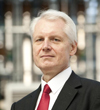
In the session "Experimental Gravitation" we cover all laboratory experiments testing gravity and the structure of space-time using classical matter, light, and quantum matter. The latter includes atomic clocks, matter wave interferometry, entangled states, etc. We are first dealing with experiments exploring the structure of space-time as it is encoded in the Einstein Equivalence Principle (EEP). This includes tests of the Universality of Free Fall, the Universality of the Gravitational Redshift, and Local Lorentz Invariance, in the classical as well as in the quantum domain. These tests determine the space-time geometry. The next group of tests will explore the field equation of gravity which in most cases is encoded in the PPN formalism; more general formalisms like Finsler geometry, Doubly Special Relativity, etc. also need to be included. The third group of tests deals with testing the predictions of GR. This also will include applications like geodesy, positioning and metrology. -
Variation of the fundamental constants, tests of the fundamental symmetries and probes of the dark sector
PT3Chairpersons: Victor Flambaum and Yevgeny Stadnik


This session is devoted to recent developments in the investigation of and high-precision searches for variations of the fundamental constants of nature and tests of the fundamental symmetries of nature, including application to searches for ultra-low-mass dark matter and related dark components, as well as dark forces. -
Fundamental physics in Space
PT4Chairpersons: Meike List and Hauke Müntinga


Over the last years fundamental physics became an important field of space science. At the moment there are many fundamental physics space mission under way. More and more missions (i) focusing on proving e.g. General Relativity Theory like MICROSCOPE and LISA (ii) using Gravity for Earth observation like GRACE and GRACE-FO, or (iii) setting up platforms using cold atoms for fundamental physics experiments in space, are already in orbit or in preparation to be launched within the next years. In this session we will focus on present missions, their status and scientific results, as well as on new mission concepts and newly developed space technologies. -
Dragging is never draggy: MAss and CHarge flows in GR
PT5Chairperson: Oldrich Semerak

To spin or not to spin? That is not the only question. In GR, inertia of a body is affected by every other mass-energy present in space-time, whether in sources or in geometry. Thus even “to be” is partially relative. Already before completing his theory, Einstein knew that a particle is heavier if inside a massive shell, and that it becomes dragged along if the shell starts to accelerate. Dragging is still not draggy almost 110 years later: it involves the magnetic component of the field, apparently more imaginative than the electric one, and it very probably drives some of the most exciting phenomena in the Universe, such as jets exhausted from accreting black holes. In this session, we shall be tasting some recent results in the field.
-
-
Quantum Gravity
-
Loop Quantum Gravity
QG1Chaipersons: Marcin Kisielowski and Jerzy Lewandowski
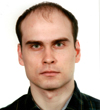
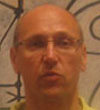
Loop quantum gravity is a background independent, non-perturbative approach to quantum gravity. The focus of this session is on the structure of the theory, its computational techniques and applications to cosmology and black hole physics. We welcome talks reporting recent developments in canonical loop quantum gravity, spin-foam models, group field theory and related approaches to quantum gravity. The common theme is the background independent quantization of Einstein's gravity and the occurrence of quantum geometry. Loop quantum cosmology and reduced quantum models of black holes will be discussed in the separate session QG3. -
Quantum Gravity Phenomenology
QG2Chairpersons: Giovanni Amelino-Camelia and Jerzy Kowalski-Glikman
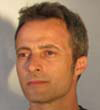

This session will be devoted to discussion of phenomenological models aimed at probing and possibly leading to detection of various phenomena of quantum gravity origin. Such models are particularly timely now, at the down of the multi-messenger astronomy, which give us an access to new observations, possibly capable of detecting Planck-scale effects. The aim of the session will be to present recent developments in both theoretical investigations and current and near-future observational opportunities. -
Loop quantum gravity: cosmology and black holes
QG3Chairpersons: Jorge Pullin and Parampreet Singh
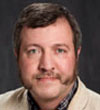

Non-perturbative quantum gravity effects as understood from loop quantum gravity and related approaches play an important role in resolution of singularities of cosmological and black hole spacetimes, and leave potential signatures in the physics of early universe and black hole spacetimes. The goal of this session would be to highlight state of the art of various developments in this field with talks focused on physical implications.
-
-
Strong Field
-
Strong Electromagnetic and Gravitational Field Physics: From Laboratories to Early Universe
SF1Chairpersons: Sang Pyo Kim and She-Sheng Xue


Strong electromagnetic and gravitational fields play important roles in physics, particularly in astrophysics and cosmology. Strong electromagnetic and gravitational fields are two of the most important ingredients of the compact objects and the early universe. This session is dedicated to all theoretical aspects of high field and/or energetic phenomena due to strong electromagnetic fields and/or gravity in Earth-based laboratories as well as astrophysics and cosmology, such as Schwinger pair creation in Minkowski spacetime and curved spacetimes, Gibbons-Hawking radiation, backreaction effects, magnetogenesis, charged particle acceleration, vacuum polarization, and nonlinearity of strong electromagnetic fields. It is also dedicated to experimental and theoretical aspects of laboratory astrophysics and astrophysical observations related to strong field physics, such as intense lasers plasma acceleration, plasma interaction with strong electromagnetic fields, radiation from accelerating charges, observation of birefringence in neutron stars, simulation of strong gravity effects etc. -
The Effects of (Non)Linear Electrodynamics on the Properties of Astrophysical/Gravitational Compact Objects
SF2Chairperson: Seyed Hossein Hendi
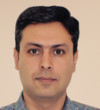
The properties of compact astrophysical objects such as black holes, neutron stars, white dwarf, etc., are affected by the internal and external electromagnetic fields.
In this parallel session, we would like to investigate the effects of different models of nonlinear (or linear) electrodynamics on various properties of diverse compact astrophysical objects. These investigations are not limited to the classical point of view and the quantum perspective can be taken into account.
-
-
White Dwarfs
-
White Dwarf Explosions
WD1Chairpersons: Robert Fisher and María Pilar Ruiz Lapuente


Type Ia supernovae play a crucial role as standardizable candles for cosmology, and underpin measurements of both dark energy and the Hubble tension. Yet, the nature of the stellar progenitors and explosion mechanisms for type Ia supernovae remains an area of active research. This session will bring together members of the supernova cosmology community along with observers and theorists investigating the type Ia stellar progenitor problem and explosion mechanisms, and aims to achieve dialog on problems of interest linking both groups.
Particular areas of focus for the session include:
* Type Ia stellar progenitors and explosion mechanisms
* Multidimensional type Ia simulations
* Photometric and spectroscopic discriminants of type Ia progenitors, particularly at early and late times
* Evolutionary effects on SNe Ia supernova cosmology and their impact on dark energy measurements
* The absolute brightness of normal SNe Ia; the link of absolute brightness and the distance scale; views on the Hubble constant tension. -
White Dwarfs, Magnetic Compact Stars and Nuclear Astrophysics
WD2Chairpersons: Manuel Malheiro and Jaziel Goulart Coelho
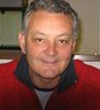

Theoretical and observational progress in White Dwarfs (WD), considering their constitution and recent observation of very Fast and massive WD, as well the importance and possible identification of strong magnetic fields in Compact Stars together with the relevance of nuclear processes to explain the stability of these sources and even explosive events as bursts, FRBs are the main topics of this parallel session.
-
Choose timezone
Your profile timezone:

